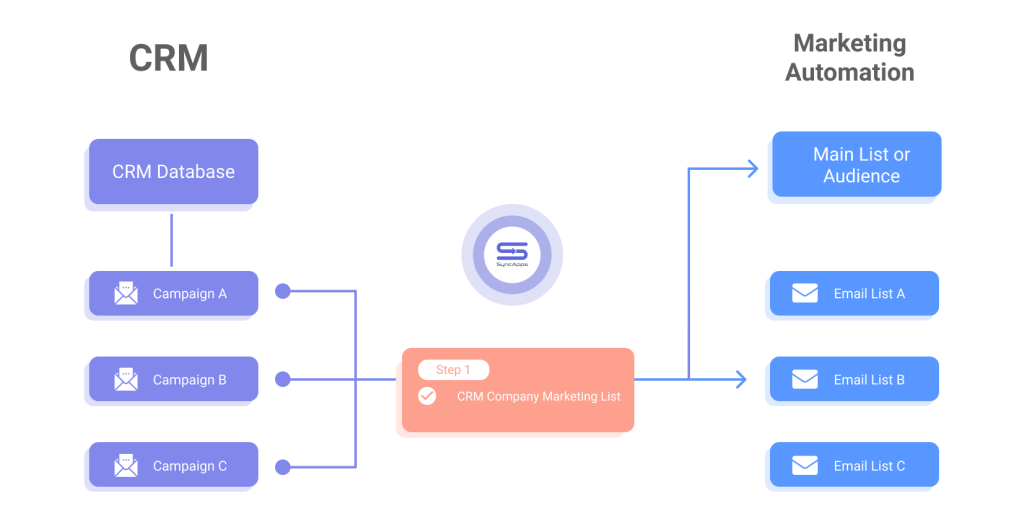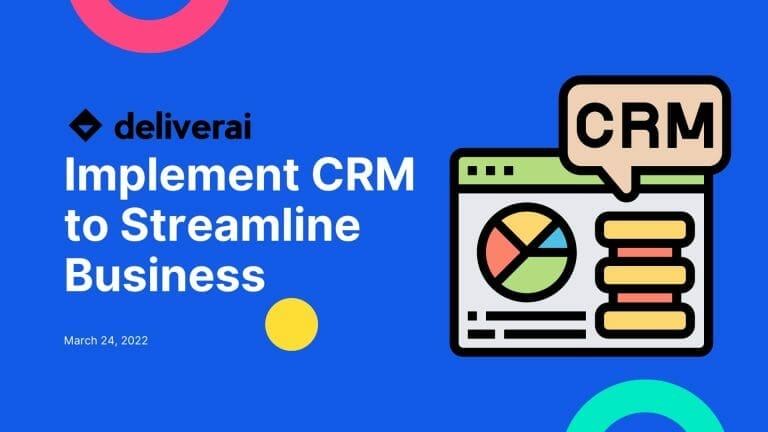Do you ever feel like your CRM strategy is a little lackluster? Like it’s the kid in class who always forgets their homework and just can’t seem to keep up? Well, fear not my friend! We’ve got you covered with these 8 steps to master your CRM strategy.
First things first, let’s break down what CRM actually is and why it’s so darn important. Then we’ll dive into defining your vision and goals, identifying your target audience, mapping out the customer journey, delivering an amazing 360° customer experience, analyzing market trends, knowing your product or service inside out, implementing the right software, setting KPIs to measure success, avoiding common pitfalls and learning from successful examples… phew!
And because we’re all about continuous improvement, we’ll even touch on how to take your CRM strategy to the next level with AI and automation. So sit back, grab a cup of coffee (or tea if that’s more your vibe), and let’s get cracking on mastering that CRM strategy!
Understanding CRM and Its Importance
So you want to understand CRM and its importance? Well, buckle up because we’re about to dive into the world of customer relationship management. CRM is more than just a fancy acronym – it’s an essential tool for businesses to build strong customer relationships. By implementing a CRM strategy, you can gain valuable insights into your customers and enhance their satisfaction and retention. Plus, CRM can boost your sales and marketing processes, helping your business grow. Trust me, it’s the first step towards mastering your CRM strategy and taking your business to new heights.
Key Benefits of Implementing a CRM Marketing Strategy
If you’re looking to level up your business game, implementing a CRM strategy can be a game-changer. Why? Well, let me tell you about some key benefits that come with it.
First off, improving customer satisfaction is a breeze when you adopt a personalized approach. By understanding your customers’ needs and preferences, you can deliver tailored experiences that leave them smiling from ear to ear.
But that’s not all! With a CRM strategy in place, you can enhance customer loyalty and retention by running targeted marketing campaigns. By reaching out to the right people at the right time, you’ll keep them coming back for more.

And it’s not just about keeping customers happy. A CRM strategy can streamline internal processes and boost team collaboration. With all your contact information and interactions in one place, your sales team can work like a well-oiled machine.
But wait, there’s more! Implementing a CRM strategy gives you a 360-degree view of your customers. You’ll have all the information you need to understand their preferences, expectations, and even their lifetime value.
Last but not least, an effective CRM strategy can help you increase sales revenue by managing your sales pipeline more efficiently. With a clear overview of your sales funnel, you’ll be closing deals left and right.
So, what are you waiting for? Dive into the world of CRM and watch your business grow by leaps and bounds. Trust me, it’s worth it.
Step 1: Defining Your CRM Vision and Goals
So, you’re ready to take the first step in mastering your CRM strategy? Awesome! Let’s start by defining your CRM vision and goals. It’s crucial to have a clear vision that aligns with your overall business objectives. Think about what you want to achieve through your CRM implementation. Are you looking to streamline your sales process, enhance customer service, or build stronger relationships with your customers? Whatever it may be, make sure your CRM vision is crystal clear.
Now, let’s talk about setting SMART goals. SMART stands for Specific, Measurable, Attainable, Relevant, and Time-bound. These goals will provide you with a roadmap for achieving success with your CRM strategy. Identify specific metrics that you want to improve, such as increasing customer retention or boosting sales revenue. By setting measurable goals, you’ll be able to track your progress and make adjustments along the way.
Next, it’s important to identify your target audience and their needs. Who are your potential customers, and what do they expect from your business? Understanding your audience will help you tailor your CRM strategy to meet their needs effectively. And don’t forget to define your value proposition. What sets your CRM strategy apart from the competition? Highlighting your unique selling points will help you differentiate yourself in the market.
Lastly, create a roadmap for achieving your CRM goals. Break down your goals into smaller, actionable steps that you can take to reach them. This will help you stay on track and ensure that you’re making progress towards your vision. With a well-defined CRM vision and goals in place, you’ll be well-prepared to take the next steps in building a successful CRM strategy.

Setting Clear Objectives for CRM Strategy
When it comes to setting clear objectives for your CRM strategy, there are a few key points to keep in mind. First and foremost, it’s important to clearly define your goals and objectives for implementing a CRM strategy. This will help guide your decision-making process and ensure that your efforts align with your overall business goals. Additionally, it’s crucial to identify the specific outcomes you want to achieve through your CRM strategy. Setting SMART (Specific, Measurable, Achievable, Relevant, Time-bound) goals can help provide clarity and focus. Finally, make sure that your CRM objectives are aligned with customer needs and expectations to maximize the impact of your strategy.
Step 2: Identifying Your Target Audience
Who Are They?
Now that you have a clear vision for your CRM strategy, it’s time to identify your target audience. Market research is your secret weapon here. Dive deep into customer data to extract valuable insights and uncover their common characteristics and preferences. By using customer segmentation, you can categorize your target audience into specific groups, making it easier to tailor your marketing messages and strategies. But don’t stop there! Develop buyer personas to truly understand the needs, motivations, and behaviors of your potential customers. This will help you build effective relationships and deliver a positive experience at every touchpoint. Remember, knowing your audience is key to a successful CRM strategy.

Creating Buyer Personas for Effective Targeting
Picture this: You’re a detective on a mission to crack the code of your customer’s minds. To do so, you need to gather data from various sources, like Sherlock Holmes piecing together clues. Demographic information such as age, gender, and location will help you paint the perfect picture of your target audience. But you can’t stop there, Watson. You must dig deeper and understand their pain points, challenges, and motivations. Conduct qualitative research, like interviews or surveys, to uncover valuable insights. Once you have all the facts, create fictional characters that represent your ideal customers. These personas will be your guiding light in the dark abyss of marketing.
Step 3: Mapping Your Customer Journey
Now that you have a clear understanding of your target audience, it’s time to map out their customer journey. Find out where your customers are coming from and identify the touchpoints they encounter along the way. Dive deep into the customer data to gain insights into their preferences and behavior patterns. Utilize CRM software to track and analyze every interaction, whether it’s through email, phone calls, or social media. This data will help you tailor your marketing campaigns and strategies based on customer insights. Remember, an effective CRM strategy is all about delivering personalized experiences at every stage of the customer journey.

How to Track and Analyze Customer Interactions?
To effectively track and analyze customer interactions, utilize CRM technology to monitor touchpoints across various channels. By analyzing customer data and identifying patterns, you can gain valuable insights into their behavior. Additionally, leverage social media platforms to gather customer information and use metrics and KPIs to measure the success of these interactions.
Step 4: Delivering a 360° Customer Experience
When it comes to providing exceptional customer service, every touchpoint matters. Personalizing customer interactions based on their preferences is crucial for creating a positive experience. That’s where CRM software comes in, automating processes and enhancing efficiency. By implementing effective CRM strategies, businesses can improve customer satisfaction and retention. And let’s not forget the importance of customer feedback – it’s a goldmine for continuously enhancing the customer experience. So, grab your CRM toolkit and start delivering that 360° customer experience!

Leveraging CRM for Personalized Customer Interactions
Leveraging the power of customer relationship management (CRM) platforms is vital for creating personalized customer interactions. By utilizing CRM tools, businesses can efficiently store and manage customer data, allowing them to segment their customer base and deliver targeted messaging. Additionally, CRM software enables the creation of personalized email campaigns, leveraging customer information for tailored recommendations. Automation further enhances the process by ensuring timely and relevant content delivery. Such an effective CRM strategy not only fosters positive experiences but also strengthens customer retention and drives business growth. Remember, building relationships with customers is key to unlocking their full potential.
Step 5: Market Analysis and Positioning
So, you’ve reached the fifth step in mastering your CRM strategy! This is where things get exciting as you dive into market analysis and positioning. Let’s take a closer look at how you can leverage your CRM software and data to gain valuable insights.
First things first, conducting thorough market research is key. This helps you understand your target audience on a deeper level and identify their needs and expectations. By using your CRM software, you can gather valuable information about customer preferences, behaviors, and even their contact information.
But that’s not all; your CRM software also allows you to track market trends. With the right tools, you can stay updated on the latest industry developments, customer expectations, and even keep an eye on your competitors’ strategies. Armed with this knowledge, you can develop a unique value proposition that sets you apart from the competition.
Once you have a solid understanding of your market and competition, it’s time to position your product or service. Utilize the power of CRM data to align your offerings with the needs of potential customers. By analyzing customer feedback, you can tailor your messaging and marketing channels to deliver a positive experience throughout the sales process.
Positioning your brand based on customer needs is crucial for building strong relationships and retaining loyal customers. Perform a SWOT analysis to identify your strengths, weaknesses, opportunities, and threats. Use this information to craft a successful CRM strategy that drives business growth and ensures long-term success.
Remember, market analysis and positioning are essential steps in building an effective CRM strategy. So, let’s get started and take your CRM game to the next level!

Role of CRM in Understanding Market Trends
Using customer relationship management (CRM) technology, businesses can effectively gather and analyze market data. By monitoring customer behavior, trends and patterns can be identified, providing valuable insights into the market. CRM systems also allow for tracking competitor activities, giving businesses a competitive advantage. Utilizing CRM dashboards provides a clear picture of the market, enabling informed business decisions. Furthermore, CRM analytics can be leveraged to make data-driven choices, leading to a successful and effective CRM strategy. With the role of CRM in understanding market trends, businesses can stay ahead of the curve and navigate the ever-changing market landscape.
Step 6: Know Your Product or Service Inside Out
Understanding your product or service is crucial for a successful CRM strategy. Familiarize yourself with its features and benefits to effectively communicate them to customers. Utilize CRM software to store detailed information about your offerings, making it easy to access and share with your team. Gathering customer feedback helps identify areas for improvement, ensuring that your product meets their needs and expectations. By analyzing customer needs and aligning your offering accordingly, you can tailor your approach and provide a personalized experience. Train your team members on product knowledge using CRM tools, empowering them to deliver exceptional service.
How can CRM help in product or service improvement?
Utilize CRM data to identify areas for improvement in your product or service. Gather valuable customer feedback through surveys and forms integrated with your CRM. Analyze the data to uncover insights and make customer-centric changes. Continuously monitor customer satisfaction using CRM metrics.
Step 7: Implementing CRM Software
Now that you’ve evaluated CRM solutions based on your business needs and selected a platform that aligns with your goals, it’s time to take the next step in mastering your CRM strategy. Train your team members on how to use the CRM system effectively, ensuring they understand its features and benefits. Customize the CRM software to match your internal processes, making it a seamless fit for your business. And don’t forget to utilize the automation features offered by the CRM platform to streamline workflows and boost efficiency. With these steps, you’ll be well on your way to implementing a successful CRM strategy.
Selecting the Right CRM Software for your Business
Choosing the perfect CRM software for your business can be quite a task, but fear not, I’ve got you covered! First things first, identify your specific business requirements. What are your needs and goals? Once you have a clear vision, it’s time to research and compare different CRM platforms. Consider factors like scalability, ease of use, and integration capabilities. Don’t forget to reach out to other businesses using the same CRM software for their feedback. After all, word-of-mouth is a powerful tool! Lastly, choose a CRM tool that aligns with your budget and long-term goals. Happy CRM-ing!
Step 8: Setting Key Performance Indicators (KPIs)
Ready to take your CRM strategy to new heights? Look no further than setting Key Performance Indicators (KPIs) – your secret weapon for measuring and optimizing your customer relationship management efforts. With KPIs, you’ll gain valuable insights into your CRM performance, allowing you to track success metrics, measure effectiveness, and set clear goals and benchmarks. These data-driven indicators will empower you to make strategic decisions, ensuring your CRM strategy is on point. Say goodbye to guesswork and hello to a high-performing CRM strategy that drives business growth and delights customers. So, let’s dive into the world of KPIs and supercharge your CRM game!

Evaluating CRM Performance Using KPIs
Ready to put your CRM strategy to the test? It’s time to evaluate your CRM performance using Key Performance Indicators (KPIs). These handy metrics allow you to analyze the impact of your CRM strategy, identify areas for improvement, and measure customer satisfaction and retention. KPIs provide a clear picture of how effective your CRM implementation is, helping you make data-driven decisions. So, don’t miss out on this opportunity to gain valuable insights and take your CRM strategy to the next level! Remember, the path to success is paved with measurable goals and benchmarks. Now, let’s dive into evaluating your CRM performance using KPIs!
What are Common Pitfalls to Avoid in Implementing CRM Strategy?
To ensure the successful implementation of your CRM strategy, avoid these common pitfalls: neglecting training and onboarding for your CRM solution, overcomplicating CRM processes, underestimating the importance of data cleanliness, siloed customer information, and overlooking ongoing support and maintenance for your CRM system.
Successful CRM Strategy Examples to Learn From
Let’s dive into the world of successful CRM strategy examples that can serve as inspiration for your own customer relationship management endeavors. By studying companies that have mastered their CRM strategy, you can gain valuable insights into effective implementation techniques. Real-world case studies provide tangible evidence of how industry leaders achieve CRM success and maintain high levels of customer satisfaction. Learning from these best practices will help you refine your own approach and navigate the complex landscape of building relationships with your customers. So grab a cup of coffee and get ready to be inspired by the triumphs of others in the realm of CRM!
Taking Your CRM Strategy to the Next Level
Ready to take your CRM strategy to new heights? It’s time to embrace the power of AI and automation. By leveraging AI, you can enhance personalization and create unforgettable customer experiences. Say goodbye to repetitive tasks that eat up your time, and hello to more meaningful interactions. With AI-driven insights, you can make smarter decisions and predictions, staying one step ahead of the competition. Don’t be afraid to embrace emerging CRM technologies – they hold the key to unlocking your business’s full potential. So, are you ready to level up your CRM game and soar above the rest? Let’s do it!
The Role of AI and Automation in CRM
AI and automation have the power to revolutionize your CRM strategy. Just picture it – AI-powered chatbots enhancing customer support, lead scoring and nurturing processes automated for increased efficiency, and valuable insights uncovered through AI analysis of customer data. Automation can also streamline your sales and marketing processes, making them more effective. So why not embrace the potential? By incorporating AI and automation into your CRM strategy, you can take your customer relationship management to a whole new level. And who knows, with a successful CRM strategy, you might just achieve business growth beyond your wildest dreams.
How can you continuously improve your CRM strategy?
To continuously improve your CRM strategy, regularly assess and analyze your CRM performance. Seek feedback from customers and internal teams for improvement. Stay updated with the latest CRM trends and technologies. Continuously train and educate your team on CRM best practices. Optimize your CRM strategy based on customer feedback and market changes.
Conclusion
Congratulations on reaching the end of this blog! We’ve covered a lot of ground on mastering your CRM strategy in 8 simple steps. From defining your CRM vision and goals to implementing CRM software, we’ve provided you with a comprehensive guide to take your customer relationship management to the next level.
Remember, a successful CRM strategy is all about understanding your target audience, delivering a personalized customer experience, and continuously improving your approach. And if you’re ready to supercharge your CRM game, why not try a free demo of our CRM software? It’s time to level up and see the amazing results that a well-executed CRM strategy can bring to your business. So what are you waiting for? Let’s get started on your journey to CRM success!







